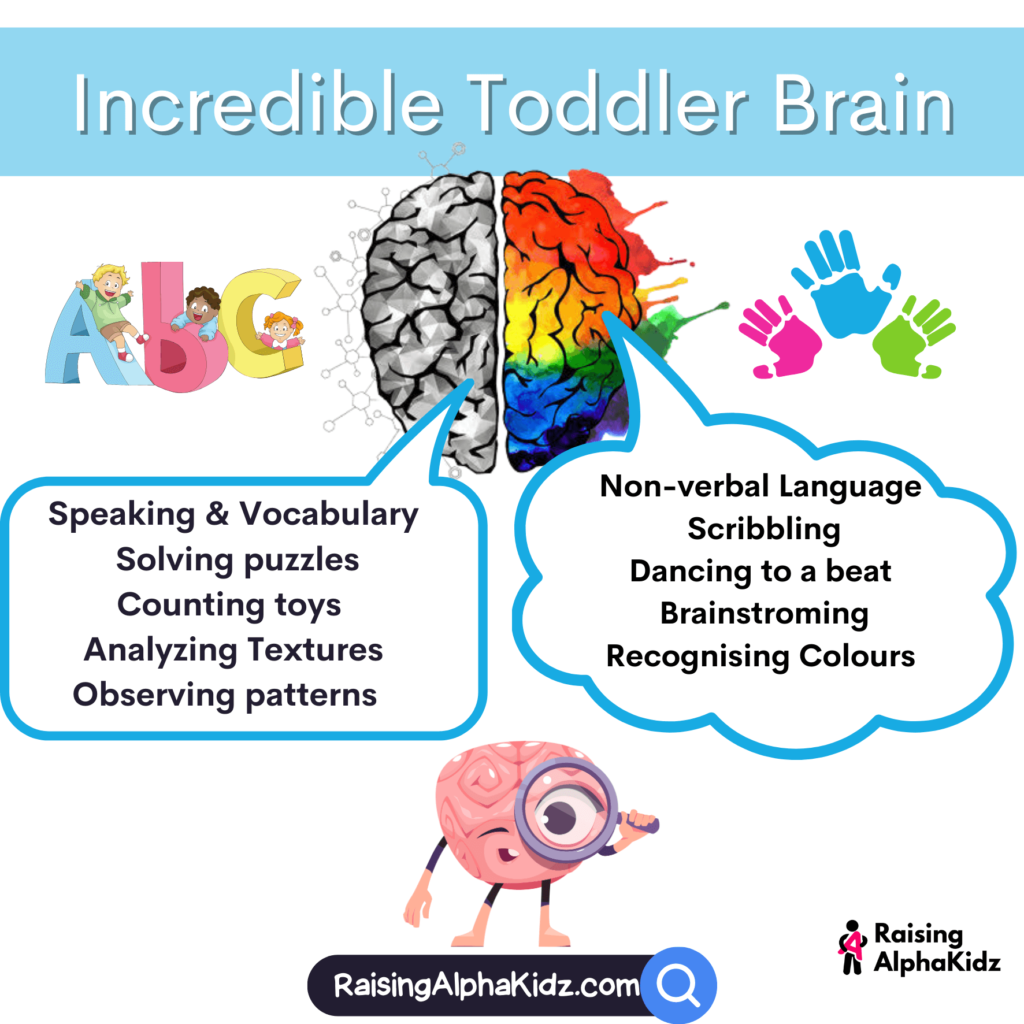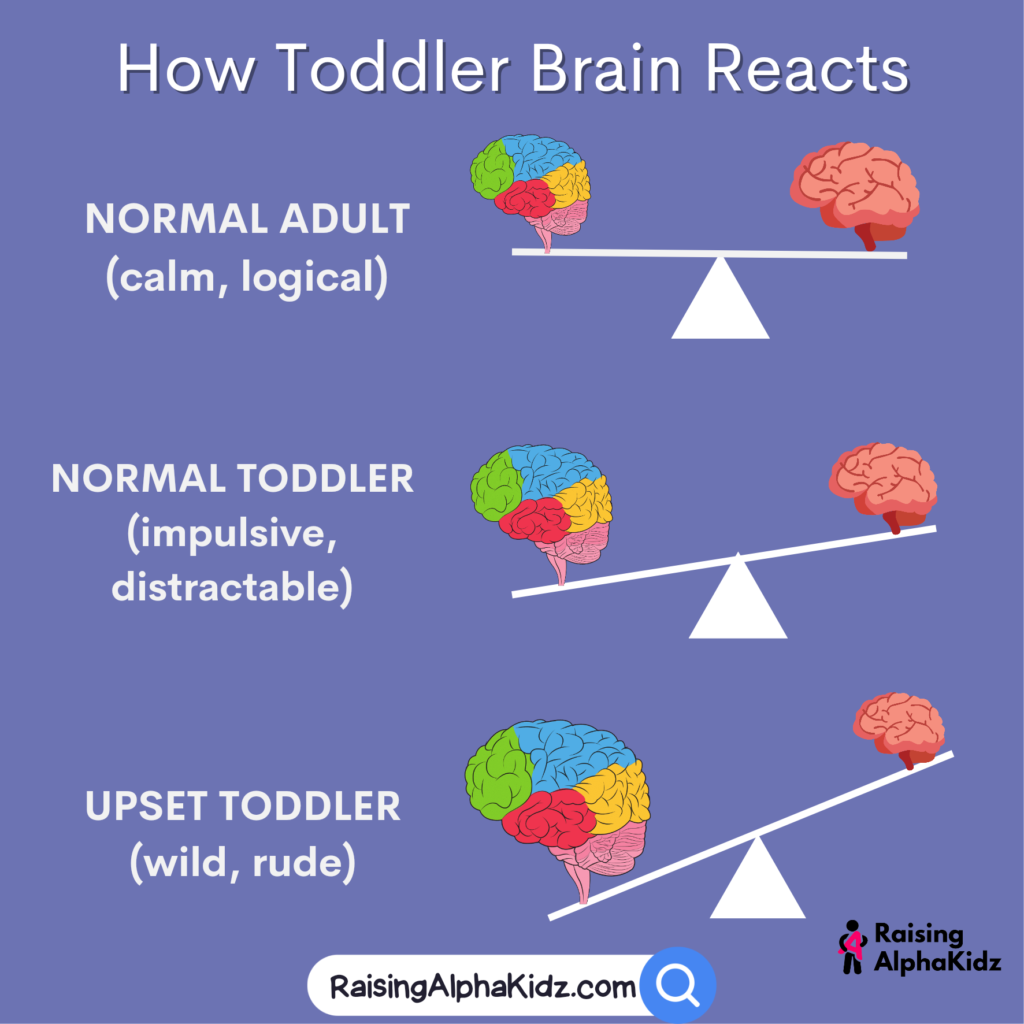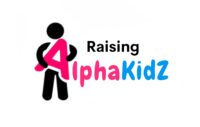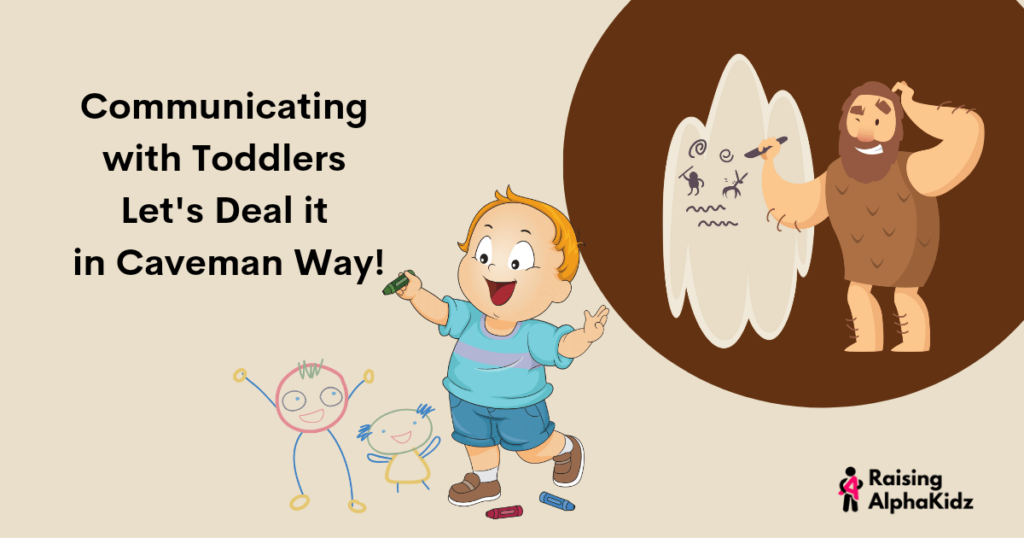Welcome to the world of parenting, where every day is an adventure in communication! As parents, we are constantly searching for new and innovative ways to connect with our little ones. We often struggle to get through to our little ones, and it can feel like we’re speaking completely different languages. But what if we went back in time and communicate with Toddlers like our ancient ancestors? This might sound crazy, but it’s actually a highly effective way of communicating with toddlers. By using simple, primal gestures and sounds, we can connect with our children on a deeper level and truly understand their needs and desires. In this blog post, we’ll explore the benefits of this approach, the science behind it, and some practical tips and tricks for communicating with your toddler in a way that will help them thrive. So grab your loincloth, sharpen your stick and join us on this journey back to our primitive roots to deal it in Caveman Way!
Incredible Toddler Brain
In both adults and toddlers, brain operates in two modes, the left and right. This helps to manage the whirlwind of mental activity. The two halves of the brain look alike but do very different things.
Thoughtful Left
The left half brain to known to follow steps. It loves methodical way of approaching. Left brain focus more on details like analysing the texture, identifying the words, counting the toys, and
solving problems and puzzles. It listen carefully, acts logical,
and stay calm and deal with the following areas.
- Math: Solving puzzles, counting toys.
- Logic: Reasoning, thinking, recognising colours
- Language: Speaking & vocabulary
- Science: Analyzing Textures, observing patterns

Emotional Right
On the right half, activities associated with right brain such as creativity, intuition, and emotional processing will play a dominant role. Right plays more role in the areas listed below.
- Art: Scribbling, Painting, drawing.
- Music: Hearing Songs, Dancing to Beat.
- Creativity: Brainstorming, coming up with new ideas
- Emotion: Empathy, interpersonal connection, understanding non-verbal cues
Read: Activities & Toys for Cognition Development in Toddlers
What Makes Toddlers a Caveman
The left and right brains keep a close balance and are more adept at controlling behaviour in older children and adults. Do you know which half of a brain exerts greater control in Toddlers? It’s Right half of it! The result is then straightforward to forecast. The right half takes its own emotional and impulsive decisions while ignoring all the rational arguments made by the left half. In adverse situations, the more angry your toddler become, the more the right brain takes over. The right half entirely takes over the left half when your kid is agitated. Due to this, they act like wild apes in public, running into streets, throwing things, screaming, and having tantrums to achieve what they want.

Right Knows Caveman Signs
Although while the right side of the brain appears to be uncontrolled, it has a remarkable talent for reading nonverbal cues, which can help parents raise their children to be more polite and composed. Even the most immature left at this point may lose their minds over a few words! Yet, the right portion will excel in recognising facial expressions, speech tones, and gesticulations even when the child is distressed. Hence, using their left brains for dialogue and argument will no longer make sense. Yet, you can control your toddlers with sign language that involves gestures, and facial expressions to get the results you want. You can be guided by a number of tactics and laws in the section below.
Signs are Better Communicators!
For children who are still learning language, using sign language may be a useful technique for communication. Here are some suggestions for efficiently teaching children sign language:
- Signs for fundamental necessities like Milk, Food, Pee, Sleep are good places to start. Your toddler will regularly utilise and be able to pick up on these indications.
- In order to effectively teach children sign language, repetition and reinforcement are major role players. By continuously employing the signals in daily life activities, you may reinforce the signs by saying them out repeatedly.
- Toddlers may need some time to learn new signals, so have patience and continue practising with them. Appreciate their accomplishments and don’t stress out too much over blunders.
- Make it enjoyable by incorporating sign language into games and other enjoyable activities.
- While teaching children sign language, employ facial expressions and body language to assist convey message.
- Be consistent to aid your youngster in remembering the signals, always use the same ones. Avoid using many signs for the same word since this may confuse your toddler.
Lets Go Practical!
Here are some practical suggestions for efficiently teaching children sign language.
Mealtime
Teach your toddler simple signs for food items such as eat, drink, more, and all done. This will help your toddler to communicate their hunger, thirst, and when they are finished eating.
- Eat: Bring your fingers to your mouth and tap them twice.
- Drink: Bring your hand to your mouth, forming the shape of a cup, and tilt your head back.
- More: Pinch your fingers together repeatedly.
- All done: Make a sweeping motion with your hand, palm facing down.
Bath time
Teach your toddler signs for water, soap, and bath. This will help your toddler to communicate if they want more water or if they are ready to get out of the bath.
- Water: Extend your hand with fingers together and wiggle it back and forth, as if you were feeling water.
- Soap: Rub your palms together as if you were washing them.
- Bath: Make a C-shape with your hand and move it up and down in front of your body.
Playtime
Teach your toddler signs for play, toy, book, and please. This will help your toddler to express what they want to play with and to ask for help politely.
- Play: Rub your palms together as if you were clapping.
- Toy: Hold your hand out, palm up, and move it as if you were winding a toy.
- Ball: teach your child the sign for ball and then have them play catch with a ball.
- Book: Open and close your hands in front of your body, as if you were turning the pages of a book.
- Please: Rub your chest with your open hand in a circular motion.
Emotions
Teach your toddler signs for emotions such as happy, sad, mad, and tired. This will help your toddler to express their feelings and communicate when they are upset or tired.
- Happy: Smile and raise your hands up in the air.
- Sad: Make a frown and move your hand down in front of your body.
- Mad: Make a fist and shake it in front of your body.
- Tired: Rub your eyes with your fists.
Outdoors
Teach your toddler signs for outside, sun, rain, and wind. This will help your toddler to express their desire to go outside and to communicate about the weather.
- Outside: Point with your index finger in the direction of the outdoors.
- Sun: Hold your hand up with fingers spread apart to indicate the rays of the sun.
- Rain: Flutter your fingers downward, as if mimicking raindrops.
- Wind: Blow out a puff of air while holding your hand out in front of your mouth.
Also, Research has shown that toddlers who learn sign language have larger vocabularies and better language skills than those who don’t. This is because sign language allows toddlers to communicate before they have developed the ability to speak, which can reduce frustration and support their overall language development. Sign language also engages multiple areas of the brain, which can help strengthen neural connections and support cognitive development. Additionally, teaching sign language to toddlers can strengthen the bond between caregivers and children, as it creates a shared language that promotes understanding and connection. Overall, sign language is a valuable communication tool for toddlers that can support their language development and help them express themselves more effectively.
Also Read: Raising Toddlers: Tackle the Tantrums like a Pro
Activities & Toys for Cognition Development in Sensorymotor Stage

